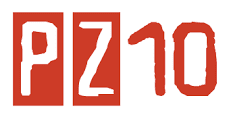Decision-making, in organizations, is regarded as a rational process Herbert A. Simon has given a model to describe the decision–making process.
The model comprises of three major phases, namely.
i) Intelligence
ii) Design, and
iii) Choice
Intelligence Phase:
In this phase, the decision maker scans the environment & identifies the problem or opportunity. The scanning of environment may be continuous or non-continuous. Intelligence phase of decision-making process involves:
a. Problem Searching
b. Problem Formulation
Problem Searching: For searching the problem, the reality or actual is compared to some standards. Differences are measured & the differences are evaluated to determine whether there is any problem or not.
Problem Formulation: When the problem is identified, there is always a risk of solving the wrong problem. In problem formulation, establishing relations with some problem solved earlier or an analogy proves quite useful.
Design Phase:
In this phase, the decision maker identifies alternative courses of action to solve the problem. Inventing or developing of various alternatives is time consuming and crucial activity, as the decision maker has to explore all the possible alternatives.
Choice Phase:
At this stage, one of the alternatives developed in design phase is selected & is called a decision. For selecting an alternative, detailed analysis of each and every alternative is made. Having made the decision, it is implemented. The decision maker in choice phase may reject all the alternatives and return to the design phase for developing more alternatives.
Decision-making, in organizations, is regarded as a rational process Herbert A. Simon has given a model to describe the decision–making process. The model comprises of three major phases, namely.
i) Intelligence
ii) Design, and
iii) Choice
Intelligence Phase:
In this phase, the decision maker scans the environment & identifies the problem or opportunity. The scanning of environment may be continuous or non-continuous. Intelligence phase of decision-making process involves:
a. Problem Searching
b. Problem Formulation {googleAds}
<div style="float:left">
<script type="text/javascript"><!--
google_ad_client = "ca-pub-4339819269747791";
/* 300 x 250 */
google_ad_slot = "0187217147";
google_ad_width = 300;
google_ad_height = 250;
//-->
</script>
<script type="text/javascript"
src="http://pagead2.googlesyndication.com/pagead/show_ads.js">
</script>
</div>
{/googleAds}
<div style="float:left">
<script type="text/javascript"><!--
google_ad_client = "ca-pub-4339819269747791";
/* 300 x 250 */
google_ad_slot = "0187217147";
google_ad_width = 300;
google_ad_height = 250;
//-->
</script>
<script type="text/javascript"
src="http://pagead2.googlesyndication.com/pagead/show_ads.js">
</script>
</div>
{/googleAds}
Problem Searching: For searching the problem, the reality or actual is compared to some standards. Differences are measured & the differences are evaluated to determine whether there is any problem or not.
Problem Formulation: When the problem is identified, there is always a risk of solving the wrong problem. In problem formulation, establishing relations with some problem solved earlier or an analogy proves quite useful.
Design Phase:
In this phase, the decision maker identifies alternative courses of action to solve the problem. Inventing or developing of various alternatives is time consuming and crucial activity, as the decision maker has to explore all the possible alternatives.
Choice Phase:
At this stage, one of the alternatives developed in design phase is selected & is called a decision. For selecting an alternative, detailed analysis of each and every alternative is made. Having made the decision, it is implemented. The decision maker in choice phase may reject all the alternatives and return to the design phase for developing more alternatives.

.jpg)

